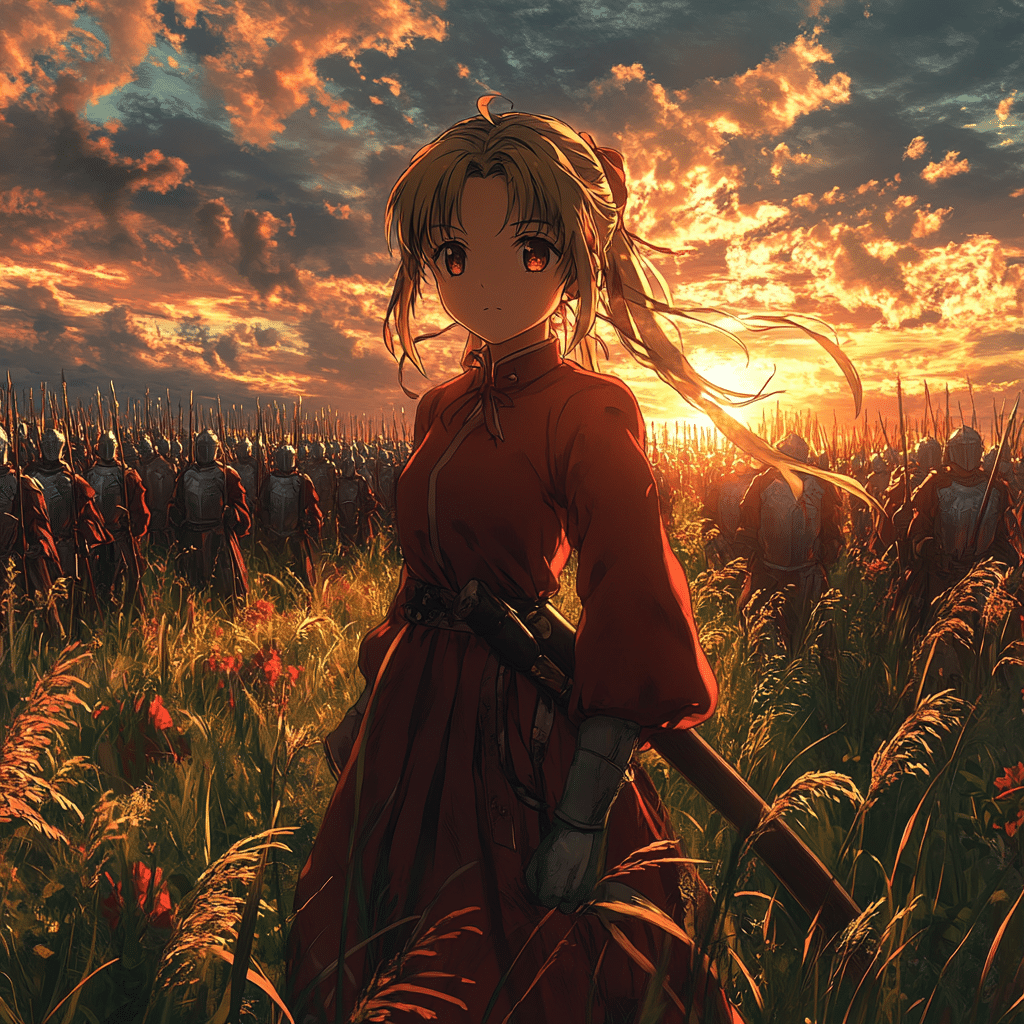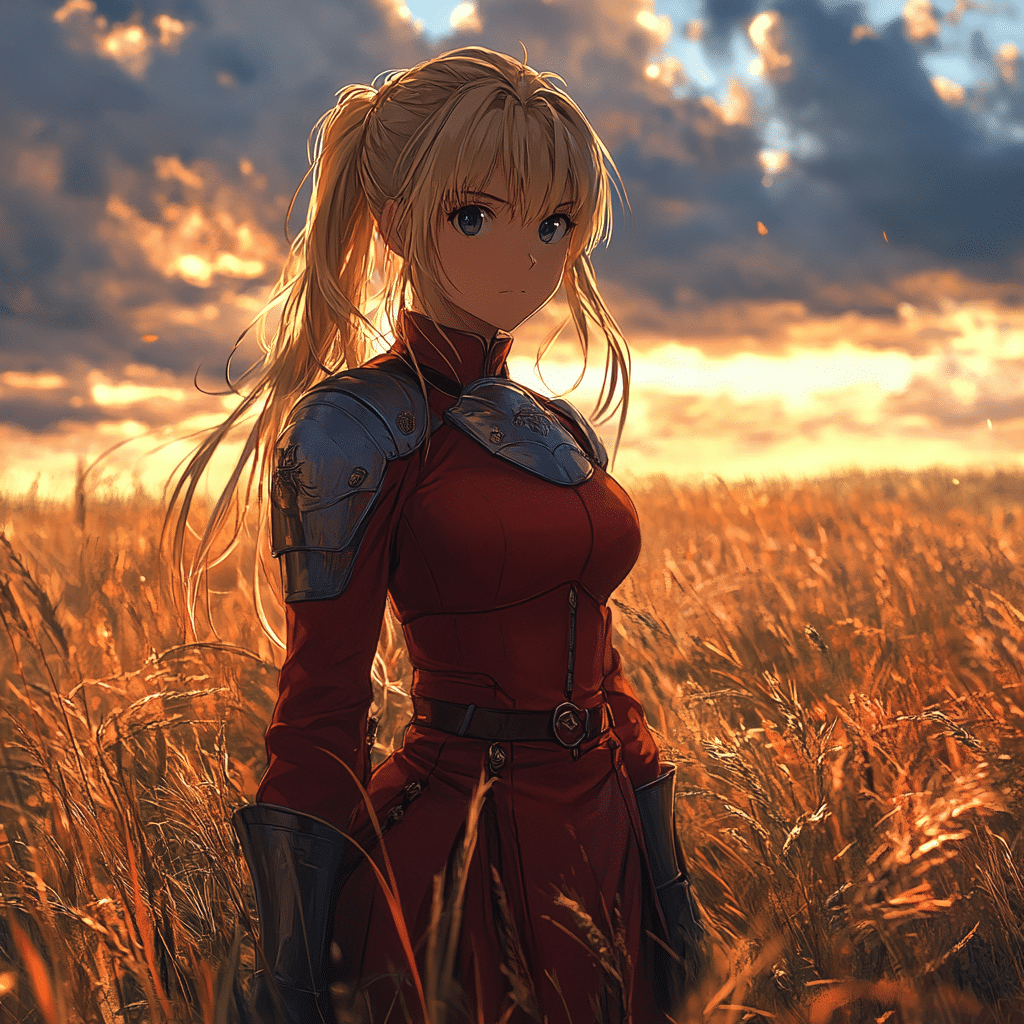
The world of visual novels has long been a hotbed for exceptional storytelling, and fate/stay night réalta nua triumphs as one of the genre’s most cherished titles. Originally launched in the early 2000s and revamped with enhanced graphics and added content, this installment represents a highlight in interactive storytelling. In this piece, we’ll dive into its various routes, unveiling the intricate narrative, character development, and complex themes that establish fate/stay night réalta nua as a staple in both gaming and literary circles.
Top 5 Routes in Fate/stay night réalta nua: A Narrative Adventure
Fate/stay night réalta nua presents players with three principal narrative routes: Fate, Unlimited Blade Works, and Heaven’s Feel. Each route offers a distinct perspective on its characters and storyline, creating a rich tapestry of decision-making and consequence. Let’s take a closer look at each route, its significance, and how it shapes the player’s experience.

1. Fate Route: The Heroic Ideal
The Fate route revolves around the relationship between Shirou Emiya and Saber, the iconic King Arthur. This route intricately weaves themes of heroism against the harsh backdrop of war. Players witness Shirou grappling with his ideals and the moral questions that arise as he strives for greatness. A pivotal moment occurs when Shirou faces the reality of who he is, challenging players to examine what being a hero truly means. Here, the narrative shines as it prompts reflection on personal values, sacrifice, and the true cost of heroism.
2. Unlimited Blade Works: The Nature of One’s Ideals
Moving on to Unlimited Blade Works, this route deepens the exploration of Shirou’s internal conflicts. The rivalry between Shirou and Archer serves as a canvas for contrasting ideologies. Archer, representing a pragmatic realism, starkly opposes Shirou’s idealistic views. The philosophical battles are compelling, as players navigate the nuances of identity, experience, and choices. Visually stunning action sequences elevate this narrative, leaving a memorable imprint on audiences.
3. Heaven’s Feel: The Darker Path
Heaven’s Feel takes a bold departure from the preceding routes, plunging players into a shadowy narrative threads filled with themes of corruption and betrayal. Centered around Sakura Matou, this route shifts focus from heroism to the intricacies of love and tragedy. It captivates audiences by exploring emotional depths like trauma and redemption. The weight of this narrative creates a gripping atmosphere, offering a nuanced reflection on human relationships.
4. The Choices We Make: Divergence and Consequence
Choices stand as a central pillar in fate/stay night réalta nua. Each decision players make not only alters the plot but also impacts character development and the world surrounding them. For example, deciding to ally with specific Servants can drastically change the journey your story takes, from emotional beats to dramatic climaxes, enriching the engagement players feel. This intricate gameplay mechanics leads to incomparable replayability, inviting participants to embark on varied adventures each time.
5. Visual and Audio Aesthetic: Enhancing the Narrative Experience
Beyond the narrative, fate/stay night réalta nua dazzles with its vibrant visuals and enchanting soundtrack. The art style, featuring detailed character designs and immersive settings, pulls players deep into the story’s universe. Complementing this is a haunting score by renowned composer Kenji Kawai, whose music seamlessly ties together emotional moments across all routes. This rich audio-visual partnership further enhances the narrative experience, making every heart-wrenching decision resonate more deeply.
Characters That Define Fate/stay night réalta nua: Beyond the Routes
While the routes shape the storyline, the characters in fate/stay night réalta nua are the soul of the experience. Each character embodies different aspects of humanity, from Saber’s noble ideals to Sakura’s tragic struggles. These rich portrayals allow players to connect with the narrative on a personal level, deepening their engagement with the unfolding drama.
Exploring character evolution through different routes reveals the layers of storytelling within fate/stay night réalta nua. For instance, Shirou and Saber’s relationship evolves drastically depending on the route chosen, showcasing themes of loyalty, love, and sacrifice. The route changes illuminate the complexity of choices — they don’t just alter the plot but enrich our understanding of what drives each character, making the journey all the more compelling.

The Legacy and Cultural Impact of Fate/stay night réalta nua
Since its initial release, fate/stay night réalta nua has left an indelible mark on various media forms, influencing countless visual novels and interactive storytelling approaches. Its narrative depth has set a high bar for future games, inspiring adaptations into anime series, films, and spin-off titles. This far-reaching impact highlights its significance in gaming culture as it continues to resonate with audiences.
The cultural footprint of fate/stay night réalta nua extends to its dedicated fanbase, thriving through discussions, fan art, and academic explorations of its intricate lore. Communities flourish as fans engage with its detailed world-building and multifaceted characters. This active engagement underscores the storytelling power of fate/stay night réalta nua, proving its worth as a beloved piece of interactive literature.
By evolving from its origins as a simple visual novel, fate/stay night réalta nua captivates players, interweaving tale, choice, and emotional depth into a masterfully crafted narrative. It offers a complex adventure that transcends mere entertainment, leaving its mark on both players and storytellers alike. From its epic routes and unforgettable characters to its profound legacy, this title stands as a cornerstone of visual storytelling, celebrated for years to come.
Feel free to explore this narrative journey in fate/stay night réalta nua and witness firsthand the magic that has captivated players and fans worldwide.
Fate/stay night réalta nua: Fun Trivia and Interesting Facts
Behind the Scenes of Fate/stay night réalta nua
Did you know that “fate/stay night réalta nua” isn’t just a game but a vibrant experience that has captured the hearts of many? It’s famous for its narrative branching system, which allows players to dive into multiple story routes. This narrative complexity reminds us of other creative works, like how a simple cat in blender video took the internet by storm, providing a unique yet entertaining experience. The sheer volume of content—what some might even call an epic saga—has inspired various fan theories and a community that loves to dissect every detail.
The Legends and Inspirations
When discussing “fate/stay night réalta nua,” it’s essential to acknowledge its roots in mythological themes. Characters like Saber are based on historical figures from legends, offering a rich backdrop that fuels fan engagement. Interestingly, the game shares its storytelling prowess with the cinematic world, where movies like Despicable Me 4 continue to explore vibrant character arcs. Just as Laurence Tribe has made significant contributions to shaping narratives in law, this game does the same in its storytelling, creating layers and connections that players adore.
Cultural Impact
The impact of “fate/stay night réalta nua” stretches beyond gaming; it shows how narrative in media can influence various facets of entertainment. The popularity of the game altered how visual novels are perceived, allowing for a more immersive medium. This rise parallels how the shoe market has changed with innovations like the Nike Air mags, which has also garnered a cult following. Just like a well-executed wide berth ensures safe travel, navigating through the multiple routes in “fate/stay night réalta nua” guarantees players an unforgettable journey packed with choices. As fans continue to analyze its themes, even discussing Theresa Randle’s role in Bad Boys 4 demonstrates the trend of blending pop culture with broader conversations about storytelling.
With its richly woven narrative and character depth, “fate/stay night réalta nua” offers more than just gameplay; it’s a vibrant tapestry that resonates within contemporary culture. Whether you’re a fan dissecting its routes or someone just curious, diving deeper reveals layers of creativity worth exploring.

What is the Réalta Nua version?
The Réalta Nua version of Fate/stay night is a PC adaptation based on the PlayStation 2 port, where the story is broken into three separate episodes, each having its own executable, starting with the Fate route released on December 23, 2011.
Is there going to be a sequel to Fate Stay Night?
While there’s no official confirmation of a sequel to Fate/stay night, the franchise continues to expand with various spin-offs and adaptations, so fans remain hopeful for new content in the future.
What is the difference between Fate Stay Night 2006 and 2014?
The main difference between the 2006 and 2014 anime adaptations lies in their focus; the 2006 version centers around Saber as the primary heroine, while the 2014 version, Unlimited Blade Works, spotlights Rin Tohsaka.
How long is Fate Réalta Nua?
Fate Réalta Nua typically takes around 30 to 35 hours to complete, although playtime can vary based on individual pacing and exploration of the various routes.
Are Fate Zero and Fate Stay Night connected?
Yes, Fate/Zero and Fate/stay night are connected, with Fate/Zero being a prequel that sets the stage for events that unfold in Fate/stay night.
What is the alternative to Nua?
An alternative to Réalta Nua is the original Fate/stay night visual novel, which presents all three routes in one experience instead of splitting them into separate episodes.
Should I watch Fate Stay Night first or zero?
It’s usually recommended to watch Fate/Zero first, as it provides important backstory and context for the events that happen in Fate/stay night.
How many versions of Fate Stay Night are there?
There are several versions of Fate/stay night, including the original visual novel, the 2006 anime adaptation, the 2014 Unlimited Blade Works anime, and various remakes and ported versions like Réalta Nua.
What happened to Shirou Emiya after Unlimited Blade Works?
After Unlimited Blade Works, Shirou Emiya continues to pursue his ideals but faces his challenges in a world that’s often hostile to his values and choices.
What order should I watch the Fate series in?
The best order to watch the Fate series can vary, but a common recommendation is to start with Fate/Zero, then move on to Fate/stay night (either the 2006 version or the 2014 Unlimited Blade Works).
How many years between Fate Zero and Stay Night?
There are about 10 years between the events of Fate/Zero and Fate/stay night, with the latter set in the same Fuyuki City but in a different timeline.
Is Gilgamesh in Fate Stay Night 2006?
Gilgamesh does appear in the 2006 adaptation of Fate/stay night as a major antagonist, showcasing his power and personality throughout the story.
How old is saber in Fate zero?
In Fate/Zero, Saber is depicted as being around 19 years old, although her true age is significantly older due to the nature of her heroic legend.
Does Saber sleep with Shirou?
There’s no explicit romantic relationship between Saber and Shirou; their bond is more of mutual respect and companionship, with moments of closeness but not physical intimacy.
Does Shirou ever meet Saber again?
Yes, Shirou eventually meets Saber again in different adaptations, especially in Fate/stay night, where their connection is explored further.
In which order should I watch Fate?
For watching Fate, a popular order is starting with Fate/Zero, then Fate/stay night (you can choose between the 2006 adaptation or Unlimited Blade Works), followed by the movies and other spin-offs as per your interest.
What is Hollow Ataraxia about?
Fate/hollow ataraxia is set about eight months after Fate/stay night, exploring new events and character interactions in Fuyuki City, often with a time-loop mechanic.
Is Fate Stay Night the same as Unlimited Blade Works?
Fate/stay night and Unlimited Blade Works are not the same; Unlimited Blade Works is one of the three story routes in Fate/stay night, focusing on different character arcs and themes.
How many Fate/VNS are there?
There are multiple Fate visual novels, including the original Fate/stay night, its Réalta Nua remake, and other titles like Fate/hollow ataraxia and Fate/Grand Order, adding to the extensive lore of the universe.





![「Fate/stay night [Réalta Nua] 」Fate(セイバールート)オープニングアニメーション](https://www.loaded.video/wp-content/cache/flying-press/1649d01a6dbf4c771a7fc7d58487a06f.jpg)
![「Fate/stay night [Réalta Nua] 」Heaven's Feel(間桐桜ルート)オープニングアニメーション](https://www.loaded.video/wp-content/cache/flying-press/c9b7273173064de6b15343ecbeb43c93.jpg)
![「Fate/stay night [Réalta Nua] 」Unlimited Blade Works(遠坂凛ルート)オープニングアニメーション](https://www.loaded.video/wp-content/cache/flying-press/edfd78c75ac725dfc2291968e986eda4.jpg)




